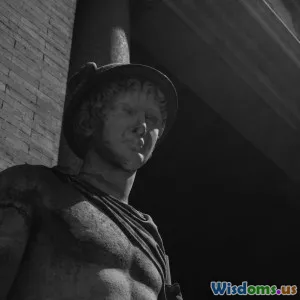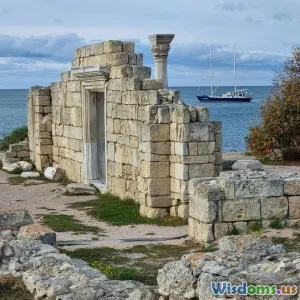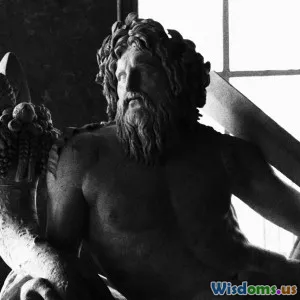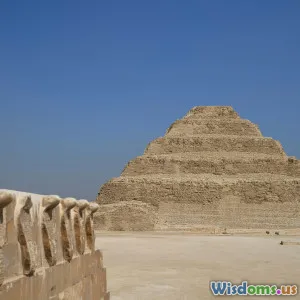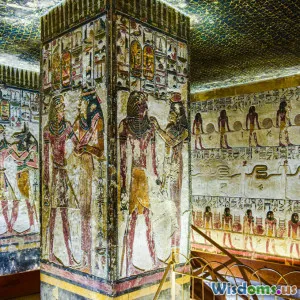
Ancient Civilizations: Myths and Realities
6 min read Explore the fascinating myths and realities of ancient civilizations, uncovering truths behind archaeological discoveries. (0 Reviews)
Ancient Civilizations: Myths and Realities
Ancient civilizations have long been a source of fascination, inspiring countless stories, theories, and even myths. From the grandeur of the Egyptian pyramids to the enigmatic Nazca Lines in Peru, these remnants of past cultures tell us much about human history. However, alongside the awe they inspire, there are also many misconceptions that cloud our understanding. This article will explore both the myths and realities of ancient civilizations, shedding light on archaeological discoveries that have redefined our understanding of the past.
The Allure of Myths
Myths surrounding ancient civilizations often stem from a combination of historical events, cultural narratives, and modern interpretations. For example, the idea that the Great Pyramid of Giza was built by slaves has been widely circulated in popular culture. However, recent archaeological evidence suggests that skilled laborers, not slaves, constructed these monumental structures. These workers were likely well-fed and organized into teams, indicating a complex social structure far more advanced than previously thought.
The Role of Myth in History
Myths can serve a purpose beyond mere storytelling; they often reflect the values, fears, and beliefs of a culture. For instance, the myth of Atlantis has captivated imaginations since Plato's writings. While no definitive evidence of such a civilization has been found, the story may have been inspired by real events, such as the eruption of the Santorini volcano, which devastated the Minoan civilization. Myths like these compel us to investigate our historical narrative, prompting questions about what truths lie hidden beneath layers of interpretation.
Archaeological Discoveries: Unveiling Reality
Archaeology plays a crucial role in separating myth from reality. As technology advances, so too does our ability to uncover the past. For example, the use of satellite imaging and ground-penetrating radar has revealed hidden structures and settlements previously unknown to us. In 2018, researchers using these technologies discovered a massive Mayan city in Guatemala that had been lost to the jungle for centuries. This finding reshapes our understanding of the Mayan civilization's complexity and scale, challenging prior assumptions.
The Importance of Context
Understanding ancient civilizations requires context. The social, environmental, and political factors at play during a civilization's peak provide insight into their achievements and eventual decline. For instance, the collapse of the Classic Maya civilization has been attributed to a combination of climate change, warfare, and societal upheaval. Each of these factors contributes to a more nuanced view of their history, moving beyond the simplistic narratives often found in popular discourse.
Bridging Myths and Realities
While myths can distort historical facts, they also offer a bridge to understanding ancient cultures. Many ancient stories contain kernels of truth that can guide archaeological inquiry. For instance, the epic tales of Gilgamesh, which depict the adventures of a Sumerian king, may reflect actual historical events and figures, albeit embellished over time.
Engaging with History
As we engage with the stories of ancient civilizations, it’s vital to approach them with a critical eye. Recognizing the distinction between myth and reality not only enriches our understanding but also honors the complexities of those who lived in those times. By studying the artifacts, remnants, and narratives left behind, we can piece together a more accurate picture of our shared human history.
Conclusion: The Ongoing Journey
The exploration of ancient civilizations is a continuous journey, one that invites us to question, learn, and re-evaluate. As new discoveries emerge, we must remain open to revising our understanding of the past. Myths may captivate our imagination, but the realities of ancient civilizations reveal the incredible achievements and struggles of humanity. Thus, embracing both aspects allows us to appreciate the rich tapestry of history that shapes our present and future.
In conclusion, the interplay between myths and realities in ancient civilizations is not merely an academic exercise; it’s a vital part of understanding who we are as a species. As we delve deeper into the archaeological mysteries before us, we uncover truths that resonate across time, providing insights that are not only fascinating but also profoundly relevant today.
Rate the Post
User Reviews
Popular Posts















